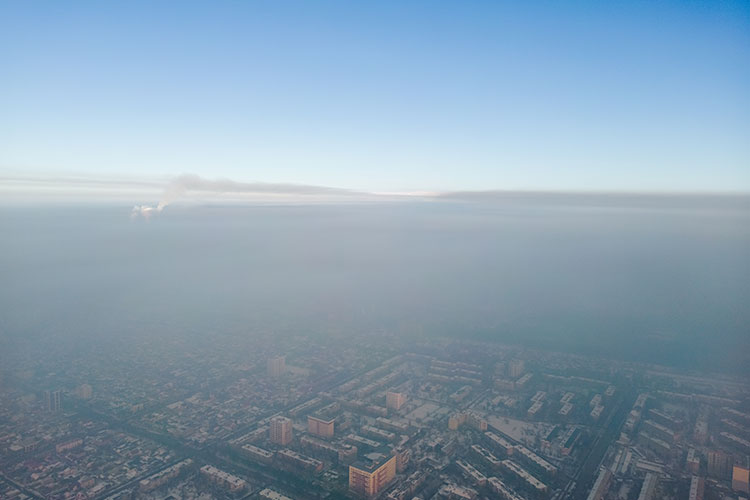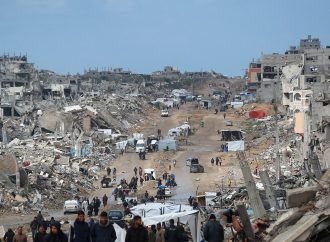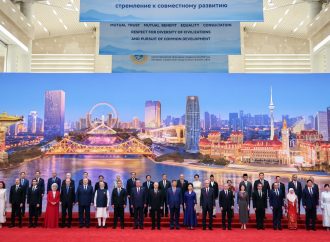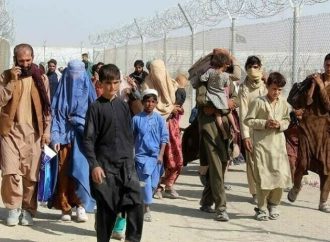Author Recent Posts Linta Jamil Latest posts by Linta Jamil (see all) Water Scarcity, Land Degradation, Climate Change: A Disaster for Pakistan’s Food Security – April 22, 2025 International Refugee law and Repatriation of Afghan Refugees – April 22, 2025 China’s Response to Trump’s Tariff War – April 22, 2025
Pakistan is already a food insecure country, with climate change and population bloom ready to unfold a new disaster. According to a 2018 UNICEF National Nutritional Survey, 40% of the houses in Pakistan are food insecure with half of these facing a severe food insecurity. Climate degradation coupled with economic indicators amounts to this despite the country being the 8th largest wheat producer in the world. Pakistan is also producing other staples at a large scale for example it’s the 10th largest rice producer in the world. The largest province in terms of land, Baluchistan faces the highest food insecurity followed by Sindh.
In recent months a water emergency was declared in the capital, and this is just part of the story. It has raised alarms regarding water scarcity in the entire country. Pakistan is expected to become water scarce by 2035. Indus River System is the main river system of Pakistan, and exponential population growth for the past few decades is depleting it. Irrigation being the backbone of this populous country utilizes 90% of the water reserves in Pakistan. Erratic weather patterns due to climate change are also contributing to water scarcity. The winter months of recent years had fewer spells of rainfall in comparison to past. A shortage of water supply is hence adversely affecting agriculture. Water intensive crops like rice are especially yielding a lesser output. This situation has reduced the quality and quantity of livestock derived products in the food chain. Therefore, food insecurity is on the rise across the entire country. Provinces of Sindh and Baluchistan, heavily dependent on agriculture and livestock farming are essentially affected.
Agro economy suggests why fertile land is crucial for an economy like Pakistan’s. This land is degrading owing to deforestation followed by pollution. Large acres of agricultural land have been turned into dumping sites of the ever-growing cities. Effluent and domestic sewage kills plants as it flows over land. This also changes soil composition and degrades land overtime. Poor quality pasturelands and changing weather patterns which are an outcome of global warming have speeded desertification of once fertile land. Unsustainable farming and irrigation have also enabled land degradation in the country, and this is another culprit of food insecurity in Pakistan.
Climate change is one of the most important reasons behind food insecurity. It was the major factor behind devastating floods in 2022 which submerged one third of the country. This is also amounting to changing weather patterns with extreme rainfall, glacial melting and extreme droughts. Mangoes are a prized export for Pakistan, but prolonged heatwaves are reducing their yield. Rising temperatures during the wheat harvest season are also damaging grains. Changes in wind pattern, coupled with warmer climates are leading to frequent locust swarms which devastate crops, as these have overtime become pesticide resistant. Rise in sea levels has also reduced the fisheries, and freshwater fish have also decreased. All these cause major disruptions in the food chain right from the grass-root levels, amplifying a disaster for Pakistan’s food security.
There are regulations to counter environmental degradation in Pakistan, these are however deficient in performing this function effectively. Pakistan Environmental Protection Act (PEPA) 1997 aims to conserve natural habitats and ecosystems. It prohibits land and air pollution. The National Environment Policy (2005) works on similar lines, integrating environmental considerations into sectoral policies. Pakistan is also a signatory to United Nations Convention to combat Desertification (UNCCD). However, there is no federal legislation to control freshwater pollution except for a few provisions of PEPA.
This Act itself is outdated and is increasingly failing to address contemporary challenges of climate change. There are no provisions in PEPA which provide modern solutions to carbon emissions. There are no laws to ensure implementation of funding for environmental conservation. Laws to counter climate change lack participation by the public and concerned stakeholders. Under PEPA an Environmental Impact Assessment (EIA) is required for some projects that might adversely impact the environment significantly. EIA is usually submitted without consultation with the inhabitants of the affected land in question. A prime example is the Suki Kinari hydropower project, where massive deforestation has been done in the already landsliding prone hills of Kaghan valley.
The first step to prevent a looming food insecurity crisis is efficient legislation concerning climate change. An Act of parliament must be passed to control the spiraling birth rate, with a focus on quality rather than quantity. Laws placing carbon taxes to make carbon intensive activities more costly are also to be passed. A Climate and Energy Fund is to be established under a statute to introduce sustainable energy sources like solar panels in the industrial sector across the entire country. PEPA provides for public hearings in certain cases, but this law is vague on the way consultation should be structured and conducted between the government and concerned parties. Stricter regulations against deforestation also need to be put in place. Laws introducing sustainable cropping practices can also prevent pollution and land degradation. Climate resistant crops to minimize food insecurity during droughts can also be introduced. Under such laws soil degradation via monoculture and chemical fertilizers is also to be banned.
This country is already food insecure. Climate change is adding to this insecurity. Pakistan can do little to prevent the global climate change, but laws preventing land, air and water pollution within the country can be introduced with stricter penalties against violations. There is a dire need to work against climate injustice. Pakistan is one of the worst affected countries by climate change. However, it only produces 0.8% of global carbon emissions. There is hence a need to push for common but differentiated responsibilities at international forums.
- Water Scarcity, Land Degradation, Climate Change: A Disaster for Pakistan’s Food Security - April 22, 2025
- International Refugee law and Repatriation of Afghan Refugees - April 22, 2025
- China’s Response to Trump’s Tariff War - April 22, 2025






















Leave a Comment
Your email address will not be published. Required fields are marked with *